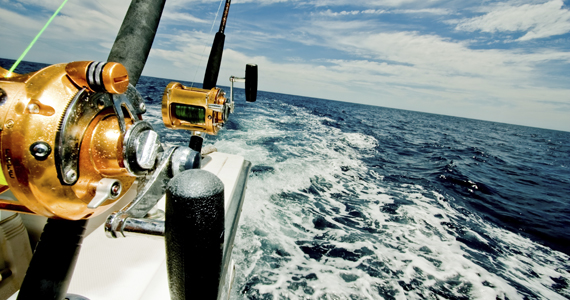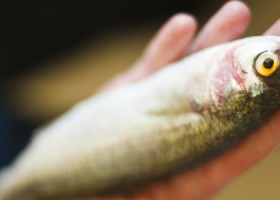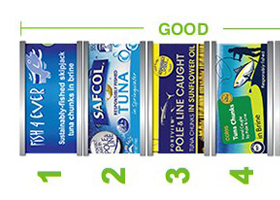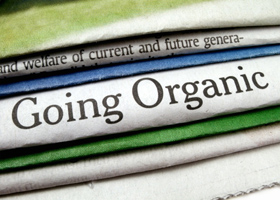
Aquaculture – Fishing for answers on fish farming
Author | Caitlin Howlett
What is aquaculture? Aquaculture is intensive farming of aquatic plants, fish and other animals such as crabs, oysters and abalone.
The basic principles are more than 4,000 years old, but intensive aquaculture has increased dramatically since the 1980s. Globally, aquaculture is more common in developing countries and includes fish on the lower end of the food chain such as shellfish.
In Australia, Atlantic salmon (which are non-native) are farmed in pens in calm salty water – Tassal Ltd. in Tasmania is the largest Australian producer. Oysters are cultivated in large areas of still water or salty rivers and sheltered bays sectioned off for the floating beds. Prawns can be raised on land in ponds but sometimes mangrove forests are cleared for farms.
What are the issues?
While there are many impacts on the environment, a major problem is feeding the captive fish smaller fish. For example, each kilogram of salmon or prawns might use up 2.5-5 kg of wild fish as feed throughout its life. For tuna ranching, the ratio of wild fish needed is even higher – it takes 20 kg of fish, such as local sustainable sardines, to feed each kilogram of farmed tuna.
This means a decrease in numbers of wild small fish, plus there’s the degradation caused by the fishing methods of catching these ‘feed’ fish. Water pollution is another problem. Excess nutrients in the water cause algal blooms and intensive farming reduces oxygen levels in surrounding water. Fish kept at such a high density are also more likely to develop diseases and have parasites. They are then given antibiotics and chemicals for these problems which accumulate in the fish and seep into the water.
Bluefin tuna are sometimes towed in transport cages to be fattened up in tanks on land, which depletes wild stocks and means they are no longer a part of their ecosystem. Plus, there’s the issue of bycatch of turtles, dolphins and other marine life when the tuna are towed to shore.
Lastly, there’s the health issue of humans and other animals eating farmed fish, which have high levels of mercury and other heavy metals that tend to accumulate in large fish.
What are the benefits?
The film The End of the Line highlighted that global wild fish populations are on the verge of collapse. There are arguments that it is more sustainable to breed domestic fish instead of depleting already massively overfished wild populations. Forty-three per cent of all fish eaten in the world is currently farmed through aquaculture. Globally, one billion people rely on fish as their primary source of protein, mainly in developing countries where it is cheaper than meat. Well-managed aquaculture could have the ability to reduce hunger and poverty sustainably in these poorer countries.
Possible ways to make aquaculture more sustainable include moving towards plant-based fish feeds rather than small wild fish, provided the land-based foods are grown responsibly. For carnivorous fish, offcuts can be used as feed, but again, consideration needs to be given to how they are sourced in the first place. Fish ponds on land could prevent water pollution issues where even the waste water can be used beneficially – such as with aquaponics, rice-fish culture and seaweed production. The seaweed grown could even be used as an alternative feed for abalone.
What the movers and shakers think
Maripaz Perez, director, Phillipine office of The WorldFish Centre
“Sustainable aquaculture is possible but it needs a concerted effort of all stakeholders, especially in developing countries where challenges extend beyond natural resource management alone. The potential impacts of climate change could mean the need to introduce new species that may not necessarily be the preferred products of consumers.”
Nathaniel Pelle, oceans campaigner, Greenpeace Australia Pacific
“Most of the fish we like to eat also have a diet of fish and marine life – that presents the fundamental problem with aquaculture. Some aquaculture systems also require ‘reclaiming’ important ecosystems like mangroves and can damage the surrounding environment through high levels of effluent, habitat loss and the escape of non-native species which become pests.”
Roy Palmer, CEO, Seafood Experience Australia (SEA) and director, Aquaculture Without Frontiers
“The world’s largest traded food commodity is seafood… In Australia we take a strong precautionary principle to a level which ensures we maintain good stocks in the ocean. One billion people are not being properly nourished each day. Simply as human beings we need to be finding ways to solve this massive problem.”
This article originally appeared in Green Lifestyle and is reproduced here with their permission. For more great stories, visit Green Lifestyle Online.





